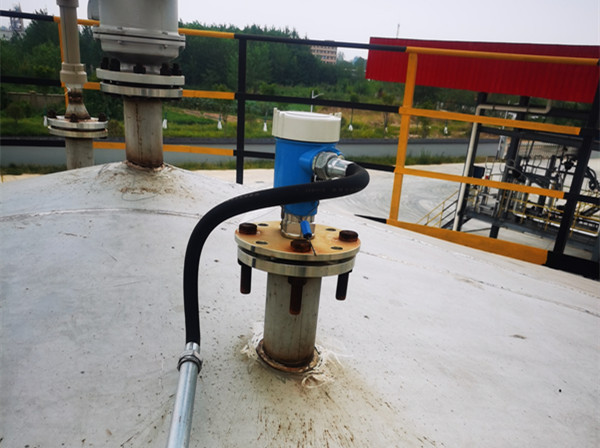There is an old Chinese saying that it is important to know what is right and what is wrong, so we must first understand the measuring principle and characteristics of radar level meters. The radar-level antenna emits narrow microwave pulses, which are transmitted downward by the antenna.
After the microwave touches the surface of the measured medium, it is reflected back and received again by the antenna system, which transmits the signal to the electronic circuit to be automatically converted into a level signal (because the microwave propagation speed is extremely fast, the time used for the electromagnetic wave to reach the target and return to the receiver by reflection is almost instantaneous).
A radar level meter is an advanced measuring instrument for solid materials, process vessels, or strong dust prone to crystallization and condensation. It has the advantages of low maintenance, high performance, high accuracy, high reliability, and long service life. It can adapt to harsh production environments such as high temperature, high pressure, and steam.
Non-contact measurement method, because it does not contact with the measured medium, the radar level meter is almost maintenance-free, has no damage, hanging material, etc., has no parts replacement problems, has a long life, simple installation, simple calibration, and is not affected by gas composition, dust, temperature changes in the warehouse, etc.

A company needs to use a radar level meter to measure the level of a pre-desilicon tank, which is a slurry tank with an agitator and a heat tracing tube. The tank is 20 meters high and 10 meters in diameter. The installation position is at the top 1/6 of the tank, avoiding the stirring slurry lobe and doing echo interference suppression.
The user responded that the radar level meter was accurate and stable when it was first installed and used for a period of time, but after it was put into production for a period of time, it appeared to be dead and the operation was not responsive.
After replacing the radar level meter, the user turned to our professional after-sales engineers. The after-sales engineer instructed the user by phone and checked the echo curve and interference suppression without any abnormality. After repeatedly asking for details, it was finally found that it was caused by the high temperature during the production process and the temperature of the electronic component part of the meter head exceeded 65°.
During the production process to maintain the slurry temperature, temperature conduction to the radar level meter head, the temperature can not be dissipated, beyond the use of the electronic part of the temperature. So the after-sales engineer proposed a solution by adding a heat sink or changing to a high-temperature type, and the meter returned a normal curve and worked normally after the modification.

Radar level meter is chosen by many enterprises and users because of its powerful measurement function and stability can face different complex working conditions, but also can give full play to its role.
Even if the product is so excellent, but in the choice of radar level meter, or familiar with the actual use of the specific conditions, according to the conditions of the choice of radar level meter with the model, so as not to cause unnecessary losses and trouble later.
